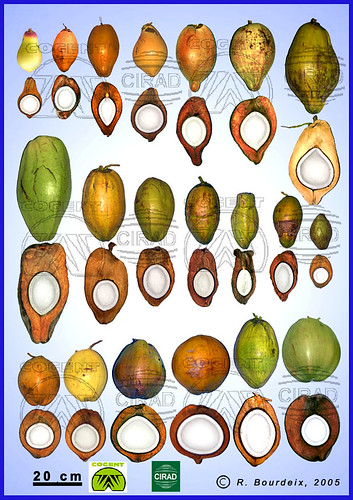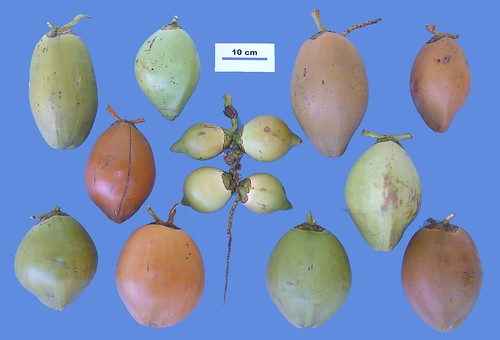

A blog maintained by Tevita Kete, PGR Officer
Secretariat of the Pacific Community (SPC), Suva, Fiji Islands
This weblog documents the activities of Pacific Agricultural Genetic Resources Network (PAPGREN), along with other information on plant genetic resources (PGR) in the Pacific.
The myriad varieties found within cultivated plants are fundamental to the present and future productivity of agriculture. PAPGREN, which is coordinated by the Land Resources Division of the Secretariat of the Pacific Community (SPC), helps Pacific countries and territories to conserve their crop genetic diversity sustainably, with technical assistance from the Bioversity International (BI) and support from NZAID and ACIAR.
SPC also hosts the Centre of Pacific Crops and Trees (CEPaCT). The CEPaCT maintains regional in vitro collections of crops important to the Pacific and carries out research on tissue culture technology. The CEPaCT Adviser is Dr Mary Taylor (MaryT@spc.int), the CEPaCT Curator is Ms Valerie Tuia (ValerieT@spc.int).

PAPGREN coordination and support

Click on the thumbnail to see a map of the locations of Pacific genebanks. Click here to download a regional directory of genebanks in the Pacific, including information on their location, contact details and holdings.
PAPGREN partners
Mr William Wigmore
Director of Research
Ministry of Agriculture
Department of Resources & Development
P.O. Box 96
Rarotonga
Cook Islands
Tel: (682) 28711-29720
Fax: (682) 21881
Email: cimoa@oyster.net.ck
Mr Adelino S. Lorens
Chief
Agriculture Pohnpei
Office of Economic Affairs
P.O. Box 1028
Kolonia
Pohnpei 96941
Federated States of Micronesia
Tel: (691) 3202400
Fax: (691) 3202127
Email: pniagriculture@mail.fm
Dr Lois Englberger
Island Food Community of Pohnpei
Research Advisor
P.O. Box 2299
Kolonia
Pohnpei 96941
Federated States of Micronesia
Email: nutrition@mail.fm
Mr Apisai Ucuboi
Director of Research
Ministry of Agriculture, Fisheries & Forest
Koronivia Research Station
P.O. Box 77
Nausori
Fiji Islands
Tel: (679) 3477044
Fax: (679) 3477546-400262
Email: apisainu@yahoo.com
Dr Maurice Wong
Service du Developpement Rural
B.P. 100
Papeete
Tahiti 98713
French Polynesia
Tel: (689) 42 81 44
Fax: (689) 42 08 31
Email: maurice.wong@rural.gov.pf
Mr Tianeti Beenna Ioane
Head, Research Section
Division of Agriculture
Ministry of Environment, Lands and Agricultural Development
P.O. Box 267
Tarawa
Kiribati
Tel: (686) 28096-28108-28080
Fax: (686) 28121
Email : agriculture@tskl.net.ki; Beenna_ti@yahoo.com
Mr Frederick Muller
Secretary
Ministry of Resources & Development
P.O. Box 1727
Majuro 96960
Marshall Islands
Tel: (692) 6253206
Fax: (692) 6257471
Email: rndsec@ntamar.net
Mr Herman Francisco
Director
Bureau of Agriculture
Ministry of Resources & Development
P.O. Box 460
Koror 96940
Palau
Tel: (680) 4881517
Fax: (680) 4881725
Email: bnrd@pnccwg.palaunet.com
Ms Rosa Kambuou
Principal Scientist PGR
NARI Dry Lowlands Programme
Laloki Agricultural Research Station
P.O. Box 1828
Boroko
National Capital District
Papua New Guinea
Tel: (675) 3235511
Fax: (675) 3234733
Email: kambuou@global.net.pg
Ms Laisene Samuelu
Principal Crop Development Officer
Crops Division
Ministry of Agriculture, Forests, Fisheries & Meteorology
P.O. Box 1874
Apia
Samoa
Tel: (685) 23416-20605
Fax: (685) 20607-23996
Email: lsamuelu@lesamoa.net
Mr Jimi Saelea
Director of Research
Department of Agriculture and Livestock
P.O. Box G13
Honiara
Guadalcanal
Solomon Islands
Tel: (677) 27987
Mr Tony Jansen
Planting Materials Network
Kastom Gaden Association
Burns Creek, Honiara
P.O. Box 742
Honiara
Solomon Islands
Tel: (677) 39551
Email: kastomgaden@solomon.com.sb
Mr Finao Pole
Head of Research
Ministry of Agriculture & Forests
P.O. Box 14
Nuku'alofa
Tonga
Tel: (676) 23038
Fax: (676) 24271
Email: thaangana@hotmail.com
Mr Frazer Bule Lehi
Head of Research
Department of Agriculture & Rural Development
Private Mail Bag 040
Port Vila
Vanuatu
Tel: (678) 22525
Fax: (678) 25265
Email: flehi@hotmail.com
Other CROP agencies
Forum Secretariat
University of the South Pacific
SPREP
Pacific biodiversity
Biodiversity hotspots
Breadfruit Institute
Hawaiian native plants
Intellectual property rights
Nature Conservancy
PBIF
PestNet
SIDS
WWF South Pacific Program
Other Pacific organizations
Foundation of the Peoples of the South Pacific
Micronesian Seminar
Te Puna web directory
Pacific news
Cafe Pacific
CocoNET Wireless
Island Directory
Pacific Islands News
Pacific Islands Report
Pacific Islands Travel
Pacific Time
South Pacific travel
Time Pacific
Interested in GIS?
DIVA-GIS
Thursday, March 10, 2005
Coconut diversity
Two very interesting illustrations of coconut diversity. The first is by Rolan Bourdeix of CIRAD, and this is what he says about it:
"It took me about 10 years to complete this picture, and I am quite happy it is finished now! I think this picture shows most of the diversity of coconut fruit shape in the world. Thanks a lot for all the researchers who helped me to do this picture, and special thanks for Ramon from the Philippines and Mathias Faure from PNG, who were the last to send me missing pictures of Tampakan Tall and Papua Yellow dwarf."
From left to right, and then up to down, the varieties illustrated are as follows:
First rank
- Papua yellow dwarf, Papua new Guinea (picture taken in PNG)
- Tahiti red dwarf, French Polynesia (picture taken in Côte d'Ivoire)
- Madang brown dwarf, Papua new Guinea (picture taken in Côte d'Ivoire)
- Cameroon red dwarf, Cameroon (picture taken in Côte d'Ivoire)
- Spicata tall Samoa, Western Samoa (picture taken in Samoa)
- Rotuman tall, Fiji (picture taken in Côte d'Ivoire)
- Rennell tall, Solomon Islands (picture taken in Côte d'Ivoire)
- Niu Afa tall, Western Samoa (picture taken in Samoa)
- Comoro Moheli Tall, Comoro Island (picture taken in Côte d'Ivoire)
- Sri Lanka tall Ambakelle, Sri Lanka (picture taken in Côte d'Ivoire)
- West african tall Akabo, Côte d'Ivoire (picture taken in Côte d'Ivoire)
- Tuvalu tall Fuafatu, Tuvalu Island (picture taken in Tuvalu)
- West african tall Mensah, Côte d'Ivoire (picture taken in Côte d'Ivoire)
- Miccro Laccadives tall, India (picture taken in Côte d'Ivoire)
- Vanuatu Tall, Vanuatu (picture taken in Vanuatu)
- Malayan yellow dwarf, Malaysia (picture taken in Côte d'Ivoire)
- Malayan Tall, Malaysia (picture taken in Côte d'Ivoire)
- Tagnanan Tall, Philippines (picture taken in Côte d'Ivoire)
- Tampakan tall, Philipinnes (picture taken in the Philipinnes)
- Kappadam Tall, India (picture taken in Côte d'Ivoire)

The second picture is by Jean-Pierre Labouisse, also of CIRAD. He used to work on coconut in Vanuatu but is now in Ethiopia and studying coffee.
This is what he says about his picture:
"For your reflection, I submit from my side a picture showing the intravarietal diversity in coconut. All of these fruits come from one single plot (2 ha) of Improved Vanuatu Talls created by several cycles of mass selection. It tooks me one day to make this picture."
* Comments:
I checked Parham (1972) Plants of Samoa to find Niu tau'ave/ sasave (Diplothemium henryanum) differing in thick unbranched spadix, spirally-arranged flowers and double spathe. Rare, while Whistler (2000) lists it among common cvs.
thanks very much for ya help
Archive
RSS Feed
Alternative feed
Contact Tevita
Something new:
Agrobiodiversity Weblog: For discussions of conservation and sustainable use of the genetic resources of crops, livestock and their wild relatives.
